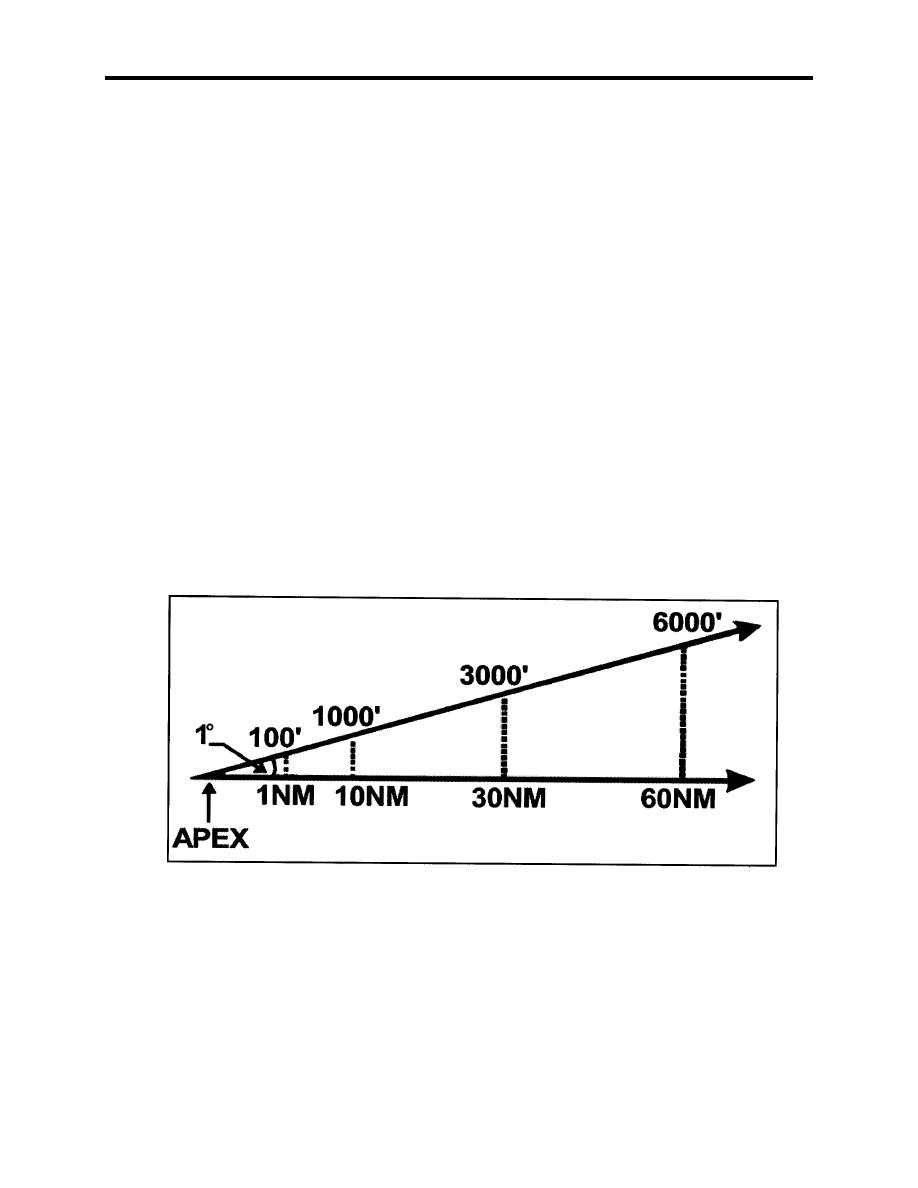 |
|||
|
|
|||
|
|
|||
| ||||||||||
|
|  APPENDIX C
T-34C INSTRUMENTS
C103. 60TO1 RULE IN VERTICAL PLANE
The 60to1 rule is a technique used to determine predictable results of changes in aircraft pitch
and is applicable to all aircraft. Use of this rule and the information it provides reduces pilot
workload and increases instrument proficiency by eliminating unnecessary changes in aircraft
attitude. A thorough understanding of the 60to1 rule requires a review of four fundamental
assumptions:
1.
Use TAS expressed in nautical miles per minute (NM/min) to establish the relationship
with pitch attitude. To simplify computations, IAS may be used in place of TAS and as an
approximation of groundspeed.
Example: 120 knots = 2 NM/min
2.
If a pilot applies and maintains a 1 change in pitch, the aircraft will make a 1 change in
vertical flight path.
3.
Similar to the discussion on radial spacing given in paragraph C101, 1 change in the
vertical plane equals 1 NM at a distance of 60 NM from the apex (see Figure C1).
4.
One nautical mile approximates 6000 feet: 1 NM = 6000 feet. A visual presentation of
the 60to1 rule in the vertical plane is depicted in Figure C2:.
Figure C-2 Vertical Plane
Clearly, there is a constant relationship between the height of the 1 ray in feet and the distance from
the apex in nautical miles. Notice the height of the 1 ray is 100 feet at 1 NM. This relationship (1
= 100 feet at 1 NM) is the heart of the 60to1 rule in the vertical plane and is mathematically
constant based on our four assumptions. Therefore, if the distance from the apex (NM) or the angle
(degrees) is changed, the altitude (feet) will be changed a proportionate amount.
C-2 ADVANCED INSTRUMENT CONCEPTS
|
|
Privacy Statement - Press Release - Copyright Information. - Contact Us |